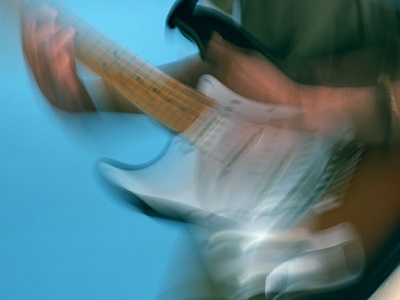7 Common Mistakes Guitar Players Make – Part 3
Welcome to part 3 of our special lesson series about the common mistakes made when learning the guitar, and how to avoid them. Click here to read part 1 and part 2 if you haven’t done so…
I’m self taught and just feeling stagnated, but joining this site has given me a renewed feeling.
5. Reinforcing Bad Habits
Habits form quickly and the habits don’t know if they are good or bad, they’re just habits. That’s why it’s so important to do things the right way from the beginning. And how do you do things the right way? I think you know the answer to that one. Practice at slow speeds.

Use good habits to build a solid foundation!
If you want to progress fast and not falter at later stages, it’s important for you to build good technical habits; i.e.: the positioning of your left hand, how you hold the pick or use your fingers, the positioning of your right hand and etc…
Imagine you are trying to build a new house and you get it just the way you want it. The house has all the right furnishing, the surround sound stereo with a big screen TV. You have your own music room complete with a state of the art home recording studio. One day, you go out for dinner and come home only to find the roof has collapsed and everything is ruined.
What happened? The house was built on a poor foundation. The same thing can happen in your guitar playing. You might get by with some bad habits for a while, but when you want to play something more technically challenging. What happens? The roof caves in and you have to start all over again.
That’s why it’s always worth the time and effort to learn things the right way from the start. I know this from experience. I was primarily self taught and when I entered the school of music at Ohio State University, I attended 2 years of instruction on the classical guitar as part of the curriculum.
I was fortunate to have a great instructor but he ripped my technique to shreds. It was like starting all over again but in the long run, it was worth it. I could have saved myself a lot of time and energy by learning to do it right from the beginning.
So, do yourself a favor, use good habits and technique from the start, you’ll be glad you did!
6. Not Using A Metronome
Well, once again this ties in with the last two chapters. The proper use of a metronome provides several important functions, not to mention that it keeps you from playing too fast.
Using a metronome can help you to develop a good sense of time. After all, music is made up of two important elements, pitch and rhythm. Rhythm can also be thought of as time. If you can’t place what you are playing in the music so that it is rhythmically correct, the most beautifully played notes will sound horrible.
Having a good sense of time also allows musicians to play together. Can you imagine what it would sound like if a group playing together had no sense of time and rhythm? What a disaster it would be.
Using a Metronome to Develop Speed
Another powerful way to use the metronome in guitar practice is for the development of speed. Let’s use a scale as an example. Turn on the metronome and begin to play in the scale in time. Start at a slow speed and work your way up.
At some point, you will reach a speed where things start to fall apart. This means you have reached your threshold and the point where you go from being able to play to be right on the edge of not making it.
At this point, you need to back off just a bit, maybe three or four points on the metronome. Practice at this speed just below the threshold for a while. Now start to notch the speed up again. You will find that your threshold has just increased by a couple of points. Repeat this process and over time you will see your ability to play faster increase.
This also allows you to keep the tension to a minimum, another benefit of using a metronome. By tracking your progress with the metronome markings, you will also have visual evidence that your speed is increasing and this certainly helps keep you motivated as well
If you don’t have a metronome I encourage you to go and get one right away.
7. Not Using A Music Stand
Another vital piece of equipment for any musician, the music stand. I personally could not function without one. Every time I try to practice without one it ends up in disaster. This may not seem like a big deal but please don’t underestimate the power of this one.
I recommend one of the heavy duty stands as well, not the cheap wire kind that fold up. They collapse and don’t hold much in the way of music anyway. The heavy duty stands can hold two or three books, pencils, everything you need for an effective practice session.
I believe that the biggest benefit of a music stand is that it allows you to practice longer. How does it do this? It allows you to maintain better posture and keeps tension to a minimum.
Occasionally, I do try to practice without my stand. What I do is that I simply throw some music sheets on a table or chair and start to play. Within a few minutes, I start to have neck, back and shoulder pain. It happens because playing without a stand creates poor posture.
I also have the occasional habit of sitting on the edge of the couch to practice. Sometimes, I simply throw a book on the footstool in front of me. This forces me to look down at the book with my neck in an awkward position. After a few minutes, the pain and tension soon follow.
With the sheet music on a stand and a good posture from sitting in a proper chair, I can keep my head level and my eyes forward. I can also keep my back straight and this allows for the most comfortable posture when playing the guitar.
This leads to greater productivity and faster improvement. After all, isn’t this what we all want?
The Best Tool For Learning to Play the Guitar
For the ultimate step-by-step guitar system, we highly recommend Gibon’s Learn & Master Guitar course. This award winning DVD course is currently on a 3-day sale and you get to save $100 off the regular price today!
Click here to learn more details and get the course before this promotion ends…







Leave A Comment